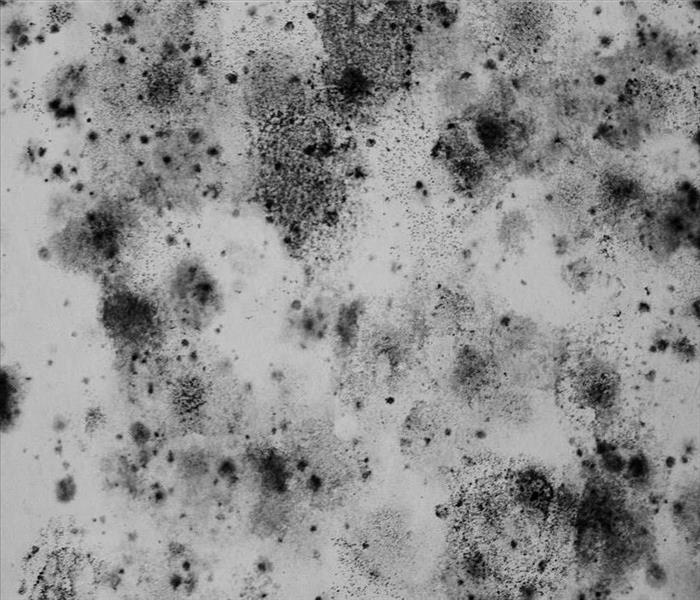Understanding Mold as Secondary Damage
8/10/2021 (Permalink)
Despite the assumption that mold is a primary concern, black mold is secondary damage. Granted, mold is alarming, and it needs to be addressed quickly; however, without addressing the real underlying issues, a business will continue to see a resurgence in mold growth.
When it comes to mold, the primary concern is water damage, which does not need to be significant. Simple issues can lead to mold growth in a commercial facility. Therefore, it is best to contact a mitigation and restoration company in Layton, UT, to assess the location. Typically, four sources of water damage can contribute to a mold problem:
- Poor ventilation
- Minor or persistent leaks
- External flooding
- Failed repairs
Need for Adequate Ventilation
It is typical for commercial buildings, especially kitchens and warehouses, to experience levels of high humidity. If a building is not adequately ventilated, the humidity contributes to excessive moisture content, resulting in mold development.
Mold is not a complex organism. It thrives in balmy, dark, and damp locations. A building that maintains temperatures between 77° F and 86° F is prime for an infestation, especially with humidity readings above normal — less than 50%. The ideal temperature does not have to be present throughout the entire building, only where the mold is likely to grow. Therefore, boiler rooms, kitchens, laundry facilities, etc., are prime real estate for spores to collect.
The best way to ensure your facility remains mold-free is to ensure proper ventilation. Additionally, install dehumidifiers in areas prone to increased humidity.
Importance of Preventative Maintenance for Avoiding Minor or Persistent Leaks
Black mold is like any other living thing, and it requires water to survive. More often than not, the water mold thrives off of is from minor and persistent leaks. Business owners might not even realize there is a leak because of how small it is. Unfortunately, those imperceptible leaks are enough to result in significant mold colonies.
The most efficient way to minimize your risks of leaks is to perform routine inspections. Additionally, hire a professional to inspect the plumbing throughout the facility at least once per year, allowing them to perform regular maintenance or repairs.
Avoidance of External Flooding and Internal Problems
While most business owners are concerned with leaks and internal flooding, external flooding is equally problematic in terms of mold. If the landscaping results in pooling against the facility or an older roof results in pooling on the roof, your facility is at risk for leaks and mold.
Mold can start from the exterior and move inward, often following the same path as water. If your facility experiences routine external flooding or pooling, make arrangements to correct the issues.
The Necessity of Thorough Repairs
If you are experiencing repetitive mold problems recurring in the same area or close, the problem is likely due to a failed repair. Sometimes, a company does not perform a thorough inspection of the facility to ensure all water and moisture problems are addressed. If you do not correct all issues, a resurgence is likely.
Black mold is secondary damage. To repair your facility, focus on finding the primary issue and resolving that first.





 24/7 Emergency Service
24/7 Emergency Service
